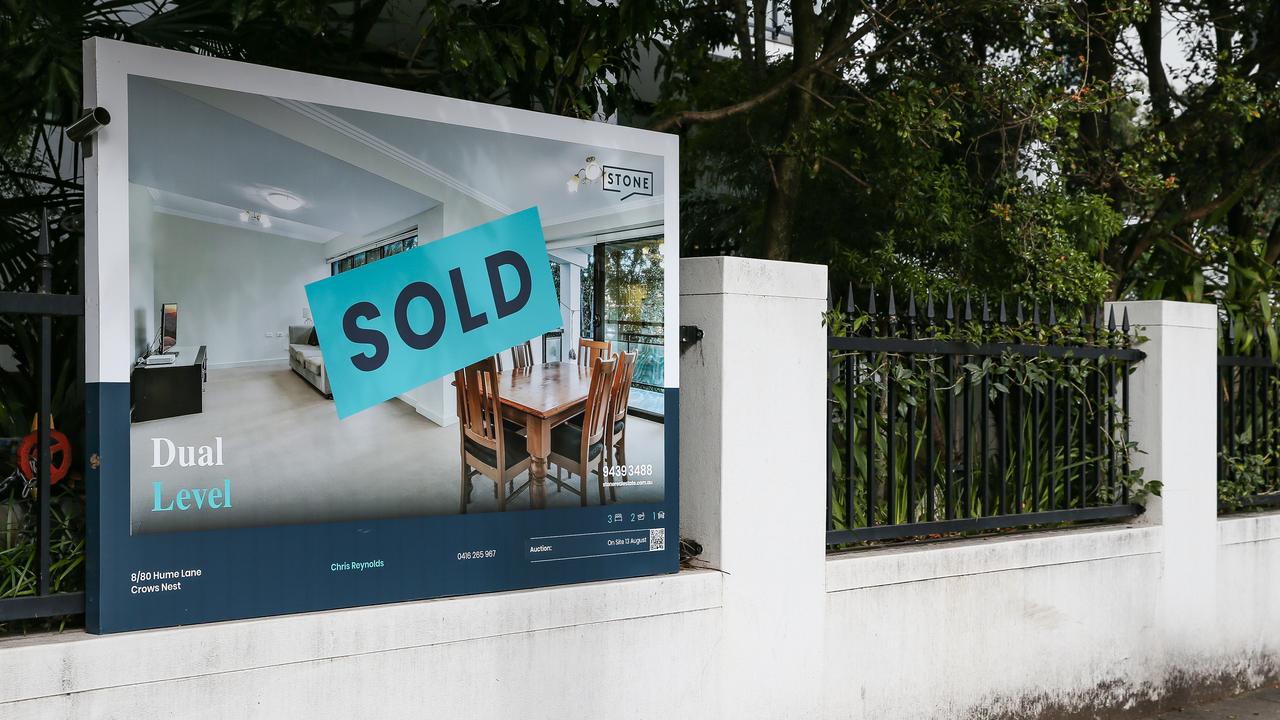PHOTO: Rate rises have smashed the borrowing power of buyers, who have lost hundreds of thousands from their spending in just the space of eight months. FILE
Rate hikes have decimated property buyers’ borrowing power, with a couple on average incomes having seen a whopping $300,000 wiped from how much they can spend on a home in the past eight months, with the impact only set to get more grim.
Dual income couples earning on average $184,000 will see a 0.25 per cent rate rise in February result in a further $23,000 slashed from their borrowing power.
This means how much they can spend on a home would have been reduced by a total of $329,000 since April to a loan size of $980,000, analysis from Canstar found.
Since April, those on a single income have experienced their borrowing power being cut from $568,000 down to $435,000, a total loss of $133,000.
A rate rise of 0.25 per cent in February would slice a further $10,000 off for solo buyers, cutting their borrowing power by a total of $143,000 since April 2022 with the ability to borrow just $425,000.

Borrowers may have to rethink what type of home they want to buy. Picture: Newscorp- Daily Telegraph / Gaye Gerard
But rate rises are predicted to continue past February too.
Three of the big four banks have forecast the Reserve Bank will increase rates for the ninth time since April 2022 by 0.25 per cent when it meets, taking them to 3.35 per cent.
However, ANZ and Westpac both predict the cash rate to peak at 3.85 per cent by May.
This would see solo borrowers see their overall borrowing power slashed to $407,000 while couples would be limited to borrowing $938,000 by May.
Canstar’s finance expert Steve Mickenbecker said for years first home buyers have been struggling to raise a sufficient deposit to buy into the housing market, but now things have changed.
“Just when softening property prices have somewhat eased this burden, higher interest rates and repayments have now become the major impediment,” he said.
“First home buyers are the one group that will welcome a house price fall, but with each further 0.25 per cent interest rate increase, the borrowing capacity of an average income earner falls by around $10,000.
“With another couple of rate increases expected before a pause, it is two steps forward and one back.”

Canstar’s group executive financial services, Steve Mickenbecker. Picture: Supplied
Higher December quarter inflation will drive the RBA to a February decision to increase the cash rate by another 0.25 per cent, he added.
“Concern about an emerging recession overseas will eventually motivate a pause, but for now, the domestic data is the dominant factor,” he noted.
“Even if the average income earning homebuyer has put aside the normal 20 per cent deposit and can cover stamp duty and other purchase costs, loan repayment affordability at present puts a $543,000 cap on the property purchase price. This is almost $70,000 below CoreLogic’s estimated capital city median unit price of $612,308.
“A rate rise of 0.25 percentage points in February blows the gap out to $81,000.
“To keep pace with diminishing borrowing power, hopeful homebuyers will need to go back to the drawing board to reappraise their property expectations.”

People should check their credit card limits and think about reducing them. Picture: Getty Images
But he said there are also steps that homebuyers can take that will go some way to narrowing the gap.
First they should look at any high unused credit card limit, which could have a significant impact on the amount you could borrow.
Canstar’s research shows a solo buyer on an average gross income of $92,000 with a credit card limit of $10,000 could bump up their borrowing power by $49,000 if they got rid of their card or by $39,000 if they lowered their credit limit to $2000.
“An unused credit card limit may sound like a safety net, but it can actually work the
other way and reduce borrowing power,” Mr Mickenbecker said.
“Repayment of the potentially fully drawn credit card over three years is usually factored into the lender’s affordability assessment, so that you may be better off scrapping an unused card to get into your home.”

People should also shop around for the best interest rate. Picture: Newscorp-Daily Telegraph / Gaye Gerard
He also recommends shopping around for the best interest rate.
A couple with an average annual income of $184,000 who applies for a loan with
a lender charging the average variable interest rate of 5.67 per cent may be eligible to borrow up to $1 million.
READ MORE VIA NEWS.COM.AU
MOST POPULAR IN NEW ZEALAND
- Claims about Jacinda Ardern’s wealth
- The 10 most expensive streets in New Zealand revealed
- He sometimes struggled to pay staff, but owns a $4m holiday home
- Auckland home buyers wanting to move south as crime rises
- Grand Designs NZ penthouse for sale
- THE ANCIENT STONE CITY: Proof of NZ civilisation before Kupe
- Millennials are buying multimillion-dollar homes via TikTok as ‘property porn’ captures the next generation
- Abandoned land for sale
- Real estate industry LEGEND will be sadly missed
- Future of Grand Chateau Tongariro Hotel shrouded in mystery















